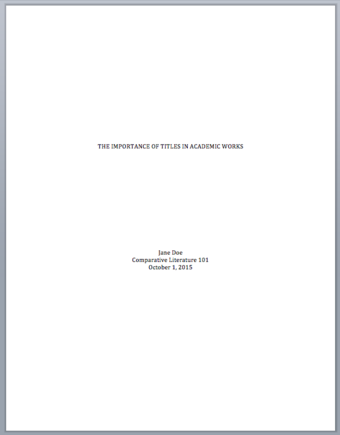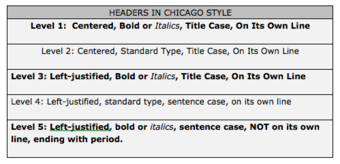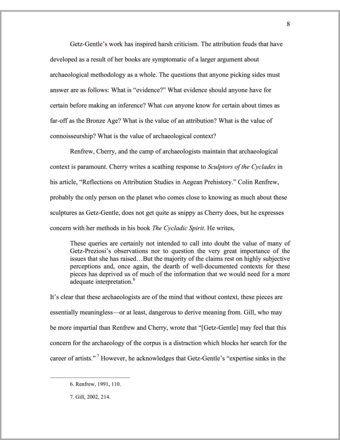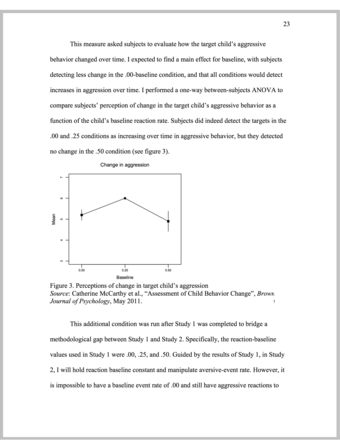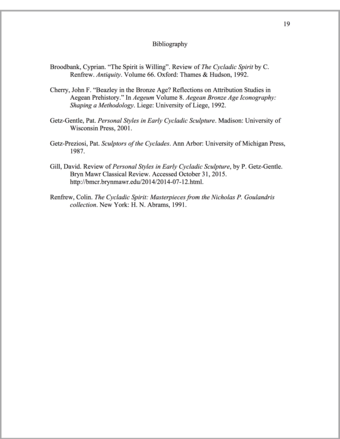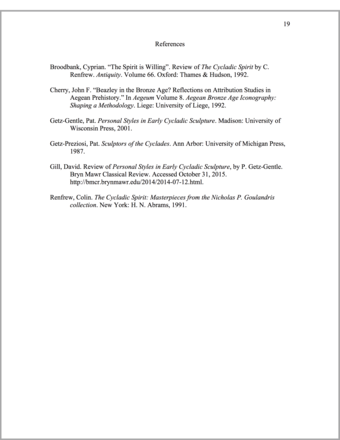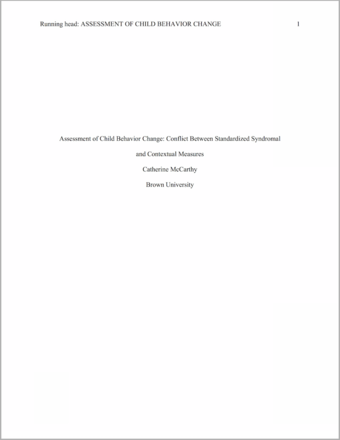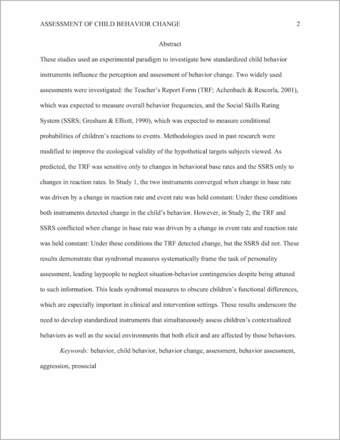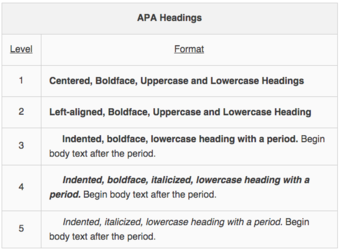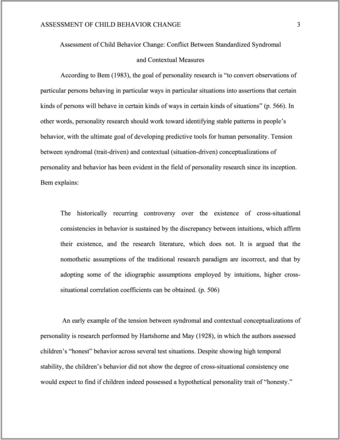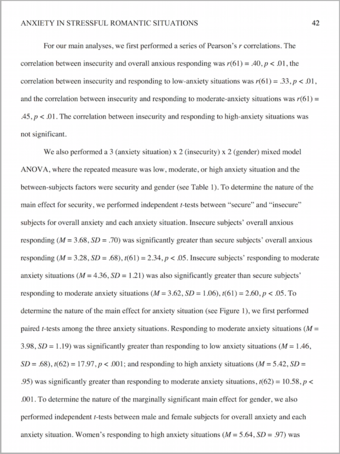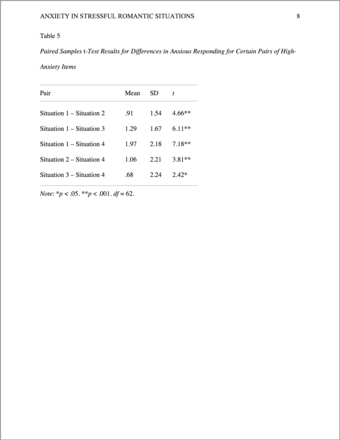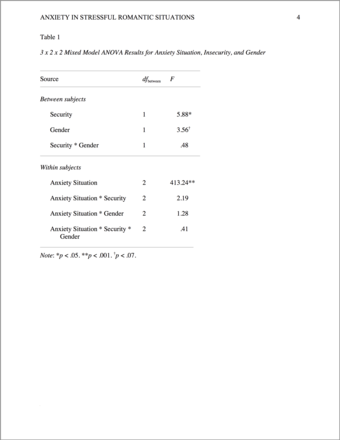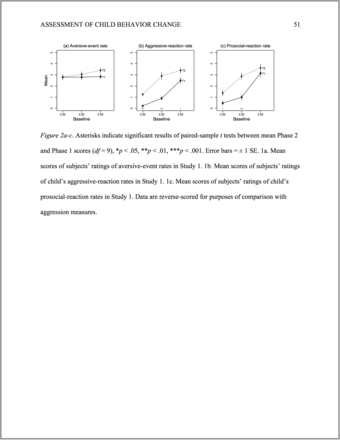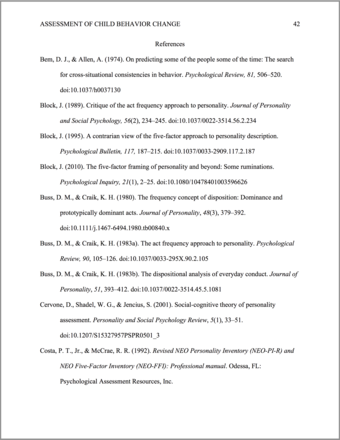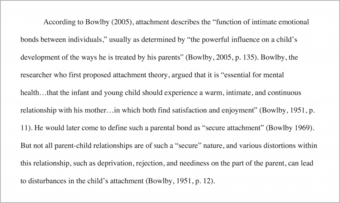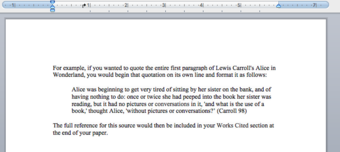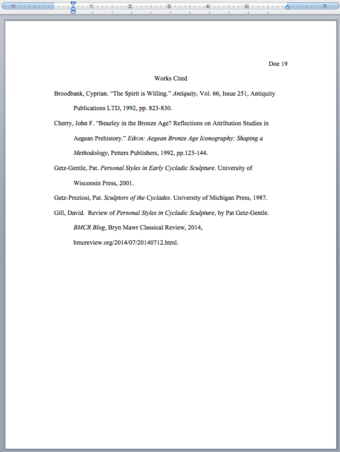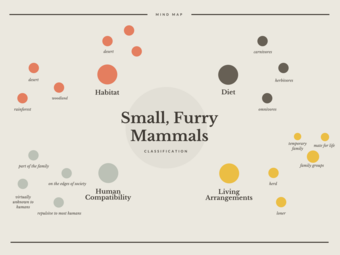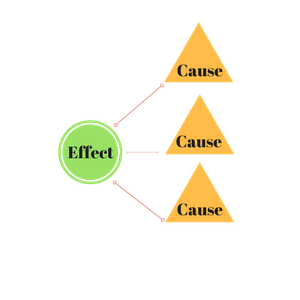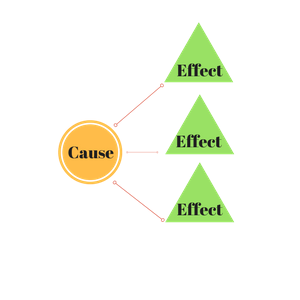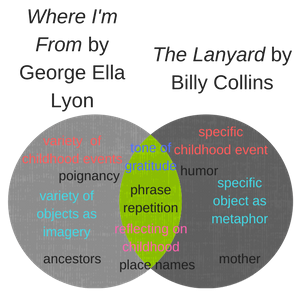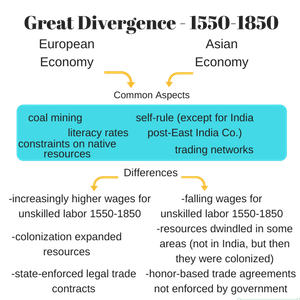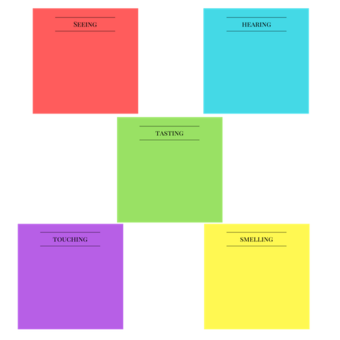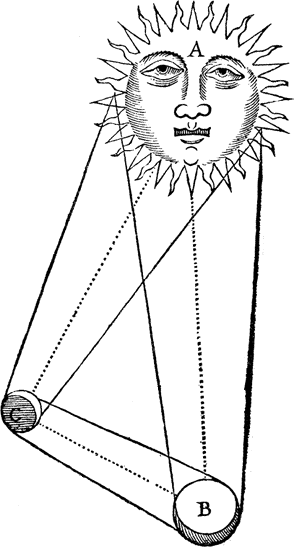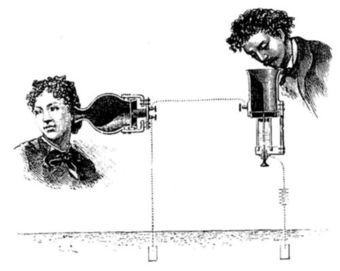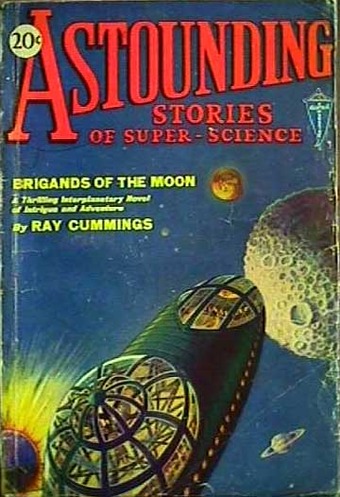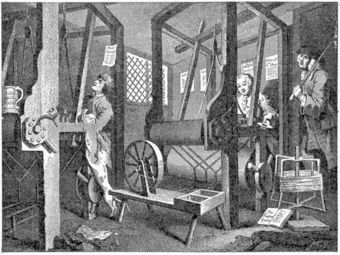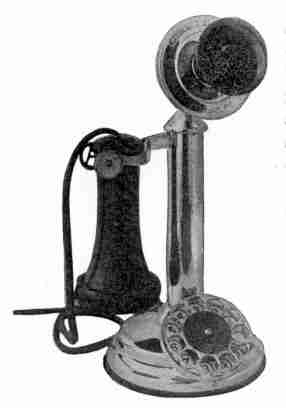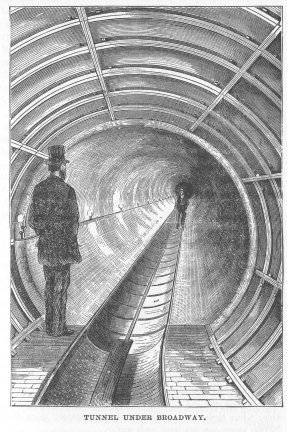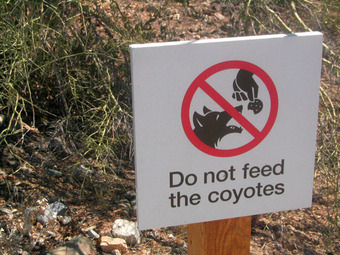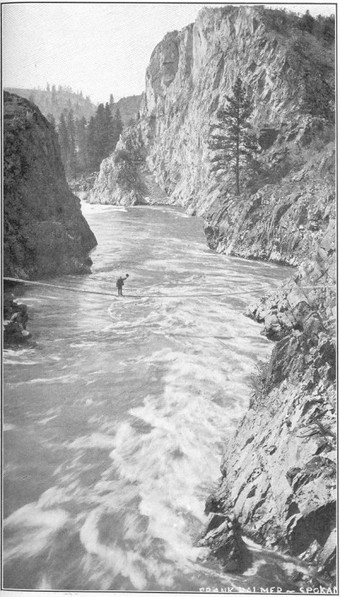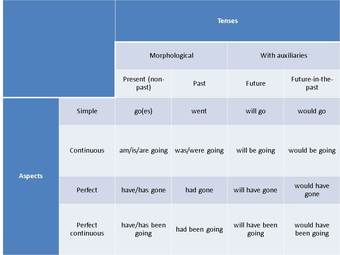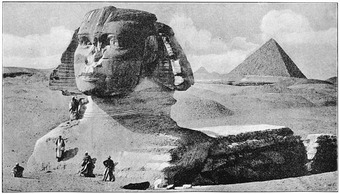Explain the meaning of “rhetoric” as it relates to written communication strategies.
We’ve all had the dual experiences of sitting spellbound, listening to a master storyteller weave a tale that leaves us breathless, and of enduring a speech that seemed too long from the first sentence. When we write, we naturally hope to emulate the former, rather than the latter. We want our words to spark the reader’s imagination and deeply engage them in our topic of choice. No one wants to be a bore.
The art of rhetoric began in ancient civilizations around the world as both an art and a tool. Captivating audiences is both politically expedient and socially desirable, and from antiquity to present day, those who hold the people in the palm of their hand also hold the power.
In examining rhetorical modes, we’ll be tapping the same collective wisdom used by Aristotle, Confucious, Demosthenes, Abraham Lincoln, Elizabeth Cady Stanton, Winston Churchill, Charles de Gaulle, Dr. Martin Luther King, Jr., Nelson Mandela, and yes, even Adolf Hitler, to bring an audience to its feet. Whether your intention is to write a stirring speech or compose a moving piece of prose, familiarizing yourself with these techniques will give you the tools you need to move and inspire.
But please, before we begin, promise that you’ll use your newfound power for good.
There are two writing environments in which you’ll use rhetoric: expository writing and creative (or narrative) writing. The difference lies in the purpose of the piece. An expository essay aims to inform and instruct, while a narrative essay is a story meant to entertain.
Differences in form arise from these differences in purpose. Guidelines for expository writing emphasize clarity and brevity in order to make an emphatic point. Narratives, on the other hand, can wander or get to the point, depending on the type of story being told and the intention of the storyteller.
A reliance on fact necessitates evidence to back up assertions, whereas a reliance on story requires faithfulness to the spirit of the event or memory being relayed. Both types of writing can be riveting, but they require different approaches and tools.
Here is a list of common rhetorical modes along with brief definitions. As you read through them, see if you can imagine an example of each. Which do you think might likely show up in an expository essay, and which would seem natural for creative writing?
The one caution with using rhetorical devices in written or spoken communication is that too much “technique” makes a speech, an essay, or a story tedious, at best, and manipulative, at worst.
You’ll need to study the techniques enough to use them skillfully, so as not to sound inauthentic. Sincerity always makes for the best writing, so while the techniques you’ll learn about here are invaluable when used wisely, they become distasteful when overused.
8.2: Types of Rhetorical Modes
8.2.1: Argumentation and Persuasion
Argumentation and persuasion are rhetorical modes used to convince others of an opinion, belief, or the merits of a course of action.
Learning Objective
Determine the purpose and structure of argumentation and persuasion.
Key Points
- Argumentation and persuasion are both used to convince others of an opinion, belief, or the merits of a course of action.
- Argumentation uses logic and objective support to convince the audience of the veracity of an argument.
- Persuasion appeals to the emotions of the audience to convince them of the inherent value of a stance.
- There are appropriate settings in which to use both argumentation and persuasion.
- The decision to use either argumentation or persuasion (or both) will guide the writer as to the writing process and the selection of primary literary tools.
- There is a generally accepted structure for a persuasive/argumentative essay that allows within it the opportunity for creative expression.
Key Terms
- pathos
-
A method of persuading others by creating an emotional response in them.
- ethos
-
A method of convincing the reader/listener through the credibility of the writer/speaker.
- logos
-
A method of convincing people through logic and reason.
Why, Oh Why?
When we decide to put an opinion out there, we’re doing it for a reason. Usually, the reason is that we want people to agree with our perspective and even take up the cause themselves. This is where you give your audience the why: why your point makes sense, why your suggested course of action is the best, why other ideas are not as sound, and why your thesis should be tattooed over their heart. Well, okay, maybe that’s going a little far.
Tattoos aren’t a bad example, though. Someone or something had to be pretty inspiring or convincing to get them to emblazon a symbol permanently on their body.
How can you be that convincing? There are two major strategies for answering the “why” of your thesis: arguing through logic and convincing through emotion.
Argumentation
We can think of a constructed “argument” not so much as an adversarial endeavor, but a search for the truth of a matter. Just as Supreme Court justices are charged with listening to all evidence before coming to a conclusion that will best serve the Republic, you may assume that your reader is seeking the most reasonable perspective to take, based on all the facts.
Your job, then, as the writer of an argument, is to present the reader with the arguments and evidence supporting both (or all) perspectives and reason out why your thesis is the most logical conclusion. The tone of such writing is dispassionate and objective; reason is king.
A common mistake about writing argumentation is presenting only the arguments that support the opinion you want your audience to adopt. That approach is less effective, because the reader’s mind naturally jumps to logical objections and counter-arguments, and if those doubts are not addressed, the reader remains suspicious and therefore unconvinced. When you contend with all the potential objections, however, the reader’s mind is satisfied and he or she can rest comfortably in your conclusion.
Another common error in argumentation is presenting a weakened argument for opposing opinions, in hopes that a cursory glance at and dismissal of the counter-arguments will satisfy the readers’ doubts. Most readers will see through this strategy, though, and lose respect for both the writer and the argument as a result. You want your thesis to be strong enough to stand up to strict critical scrutiny and demonstrate that strength in your argument.
For these reasons, argumentation is a rigorous endeavor. You usually won’t even begin to formulate a thesis for such a paper until you’ve done extensive research, because you’ll want to be well-educated on the topic before coming to any conclusions yourself. The good news is that your process in deciding what you believe is fodder for informing your audience: once you’ve done the discovery, you can lead your readers on the path you yourself followed to the conclusion that feels natural to you. If your own search was thorough enough, and if you express it clearly, your audience will be more likely to agree with you, or at least to respect your opinion.
Consider an argument, then, a sincere effort to find the “truth,” or at least the best option for the situation in question.
Tools for Argumentation
The most effective tool in argumentation is solid support for each aspect of the argument. You will create an ethos of credibility to the extent your reader finds you trustworthy. To this end, you will need to consider both the effectiveness of the source for making your point (whether it is a quote, facts, or data), as well as the reader’s perception of the source of that information.
- Reliable research has certain markers that make it credible. In a quantitative study, for example, sample size is important to ensure the data is truly representative. Data saturation is a key in qualitative research. An example of unreliable research would be the claim, “Voted best fish taco in the world three years in a row!” Who voted? The kitchen staff? Though you don’t have to be a researcher yourself to make quality arguments, you need to learn where to look to find studies that are, in fact, reliable. Which brings us to the next point.
- You’ll also need to assess the perceived reliability of the source. Studies funded by cigarette companies on the effects of cigarette smoke are less likely to find deleterious effects than studies commissioned by the National Institutes of Health, or at least we might logically assume that. You’ll want to avoid any appearance of bias, along with any actual bias. If your reader perceives your sources as objective and reliable, he or she will trust you and be willing to follow your argument to its conclusion.
Persuasion
If you’re less “Dr. Spock” and more “Captain Kirk,” though, you might be more inclined toward persuading your audience to believe as you do. We’ve all had friends who can talk us into almost anything. How do they do that? They get us in trouble by effectively prodding our emotions.
Your intentions, of course, will be noble, but the technique works either way.
Persuasive writing is about convincing the reader that your opinion is the one he or she should adopt. The focus is on the opinion itself, rather than any counter-arguments, and the reader is led (or lured) step by step to feel increasingly more comfortable with the thesis. The tone can be more aggressive and passionate than in argumentation, because the writer is appealing to the reader’s emotions, rather than to the logical mind.
You’re in a plane for the purpose of skydiving with your daredevil buddy, but you’ve never done it before and you are hesitant to jump. Your friend doesn’t discuss the possibility of your leg breaking or the chute not opening. No, instead your friend talks of the thrill you’ll feel as you soar through the air, the confidence it will give you to have done something so daring, and the bragging rights you’ll have once you’re on the ground. There might be a statistic or two thrown in about how few people get hurt skydiving, and there may even be a warning about what you’ll feel like if you don’t jump, but mostly your friend is there to inspire.
Naturally, you jump.
How does one translate such prodding into writing? It’s all about conviction and anticipation. Your friend intuited your objections, but rather than mentioning them, simply countered with an affirmation of the thesis (jumping out of airplanes is great). The benefits of believing this way are going to make all counterarguments obsolete, so rather than entertain those, we’ll just keep stepping up the emotional pressure to embrace the thesis.
Tools for Persuasion
The most effective tools in persuasive writing are examples and sensory images.
- Examples (illustrative stories) help your reader identify with someone experiencing the plight you describe. Identification with another being is a powerful pull on the emotions. “The homeless man, finding the shelter closed once again due to overcrowding, casts his eyes to the bustling sidewalk, hoping someone, anyone, will catch his eye and offer help, even if it’s only the feeling of connection to another human being.”
- Sensory images, unlike logic, appeal to our emotional center. Reading or hearing how something looks, tastes, smells, sounds, or feels can create a visceral response in us. “He sighs and shuffles off to the tattered old refrigerator box that provides little insulation from the icy ground and reeks of the garbage piled inches from his face.”
Choose Your Method
You may have come to the conclusion that an argumentative essay is a more sophisticated way of getting someone to see a particular perspective. It’s true that the argument is usually considered the more formal writing style, but there are cases in which pathos may be more appropriate than logos. How do you know which to choose?
- Audience – Know to whom your words will be directed. Are your readers more likely to be swayed by peer-reviewed research or emotional appeals?
- Occasion – There’s something to be said for gauging the right time for facts and the appropriate time for conviction. Are you writing a State of the Union address, where you’re hoping the audience will leap to its feet with applause every few paragraphs, or are you explaining to your board of directors why your company should go public in six months?
- Purpose – Similarly, you’ll want to keep the end-game in mind. Asking your readers to take an immediate action might require a different approach than asking them to permanently alter their belief system.
Here is an example of the use of a persuasive piece of writing. Do you think it would have been more effective as a logical argument?
The Black Panther Party’s 1966 Ten Point Program outlined demands and beliefs that the organization believed would begin to repair some of the damage of slavery and racism in the United States. Here is #5 from the “What We Want Now!” section (note that even the exclamation point hints at the persuasive nature of the argument):
“We want education for our people that exposes the true nature of this decadent American society. We want education that teaches us our true history and our role in the present day society.”
Over a decade earlier, Thurgood Marshall had presented a petition along the same lines to the Supreme Court, only he chose to use argumention:
Although he raised a variety of legal issues on appeal, the most common one was that separate school systems for blacks and whites were inherently unequal, and thus violate the “equal protection clause” of the Fourteenth Amendment to the U.S. Constitution. Furthermore, relying on sociological tests, such as the one performed by social scientist Kenneth Clark, and other data, he also argued that segregated school systems had a tendency to make black children feel inferior to white children, and thus such a system should not be legally permissible.
Though both pleas relate to offering a stronger system of education for people of color, the context for each assertion was different. One had as an audience the general public; the other, at least initially, spoke to court justices. The occasion of arguing before the Supreme Court required Marshall to make a formal and objective case, whereas the Black Panthers were seeking a dramatic shift in the public perception of the status quo. Marshall’s purpose was to build an argument that would stand up to scrutiny for decades or even centuries to come, in any instance of societal segregation, and while the Black Panthers would likely have agreed with that goal, their immediate purpose was to lift the veil of white privilege.
You might notice, though, that there are elements of persuasive language in Marshall’s argument: he speaks of “a tendency to make black children feel inferior,” which hints at pathos. The reason we wouldn’t categorize it as such, though, is because he is citing sociological data: he is presenting this tendency as a fact, not trying to manipulate the court’s emotions.
Similarly, the organization of the Black Panthers’ Ten Point Program might seem akin to a logical argument, but the content of “What We Want Now!” is grounded in ideas of right and wrong, rather than objective data.
So, impassioned plea or reasoned argument, let’s look at the steps to creation.
Steps to Creating an Argument
- Consider your topic. What are some questions that come up for you about this topic? What do you expect to find as you research it? How might people disagree about the topic?
- Research the topic. Find out what’s being said about the topic on both or all sides of the issue. Look at the primary writers or speakers championing each perspective and allow yourself time to marinate in each of their ideas.
- Choose the perspective you agree with. Having read material representing each general idea about the topic, you will likely find yourself agreeing with one or another. Formulate a preliminary thesis statement based on your conclusions.
- Go back to the literature to support your thesis statement, but be open to changing it if more information comes to light.
- Identify each counterargument, finding the most cogent resources for each, and make your best argument against these using the most applicable and reliable sources to support your perspective.
- Organize your paper in a way that will most effectively anticipate the reader’s mental journey through the topic.
Steps to Persuasion
- Search your feelings for a response to the topic. What kind of emotions come up around it? What is your initial gut reaction to a statement for and a statement against the topic?
- Decide what you want to convince others about concerning this issue. What feels meaningful to you concerning this topic? Create a thesis statement that reflects this desire.
- Outline an argument based on what you believe and feel, then dive into the literature to find out what others have had to say on the topic. You’ll want to look at objections to your opinion as well as supporting evidence in order to anticipate your reader’s thought process, even if you won’t be including all of these references in your paper.
- Find or create stories and sensory imagery that will speak to the reader’s emotions.
- Organize your paper in a way that puts increasing pressure on the reader’s emotions. Often, this means beginning with imagery that orients the reader to the situation and then intensifying the pathos as you go. Keep counterarguments in mind as well, as you attend to organization.
If you are combining the approaches, you’ll want to create your paper based on the steps to creating an argument and then incorporate sensory imagery, stories, and impassioned pleas into the structure as appropriate — often in the introduction and conclusion.
Structure of the Argumentative and Persuasive Essay
While you can use argumentation and persuasion in any type of writing, a common venue is the essay, in which you’re asked to argue for or against a position.
While there are no hard and fast rules to structuring your essay, there are some generally accepted conventions that will give you a head start in creating your argument and allow you to focus on content.
Introduction
Think of the introduction as an inverted triangle; a funnel. You want to begin with a broad introduction to the realm of thought and end with a very specific thesis that the rest of the paper will prove. The purpose here is to capture the reader’s interest and quickly move him or her to an understanding of your point of focus.
- Introductory sentence. This is where you can spark your audience’s interest in the topic. You can use pathos here or make a bold statement of fact, either of which can serve as a “hook” to capture the reader’s attention.
- Linking sentence. Here, you narrow in on your topic more specifically. Again, you may choose to accomplish this through imagery, a statement of fact, or by simple explanation. By the end of this sentence (which could actually be as many sentences as you need to accomplish the task), your audience should know the problem you wish to address and why it’s important.
- Argument #1. Here, you’ll preview the first argument in favor of your thesis, which you’ll expound on in the first body paragraph. You haven’t stated your thesis yet; these three sentences will lead your reader to it naturally. So think of these three (or more) sentences as priming the pump for the rush of clarity that is your thesis statement.
- Argument #2. Again, this sentence is merely a statement of what you’ll expound on in the body of the paper: this time, in the second body paragraph.
- Argument #3. Here, you’re simply stating the argument for the third body paragraph.
- Thesis statement. The thesis statement should flow naturally out of the arguments (hence, the funnel analogy). It should be clear, concise, and one-sided.
Body Paragraphs
Each of the paragraphs in the body of your paper will serve the thesis statement. Each of these paragraphs will have its own point to prove related to the thesis. A well-structured argument will grow stronger with each paragraph, whether the technique is argumentation or persuasion.
Each body paragraph (and three to five paragraphs for a body are the standard guideline) should contain
- A topic sentence. Also called a “sub-thesis,” the topic sentence is a main point that supports your thesis statement. You can refer to the thesis statement in this sentence to remind your audience how this main point relates to it.
- Evidentiary sentences. Here is where you offer evidence and explanations to support the veracity of the topic sentence. Rather than a simple listing of supporting evidence, though, you’ll want to form a coherent paragraph linking each item thoughtfully. Phrases like, “not only,” “therefore,” “in addition to,” and “moreover” are commonly found linking pieces of evidence in a body paragraph.
- Concluding sentence. Here, you will link the first topic sentence — the one you just gave evidence for — to the second topic sentence which you are about to introduce. Think of this sentence as a vital link of a chain. Without it, your audience will not be able to follow your line of thought. How does the point you just proved relate to the one you’re about to prove?
Counterarguments
In an argumentative essay, you can include counterargument paragraphs either directly after the main point they attempt to contradict (thereby getting the objection out of the reader’s mind right away), or you can entertain counterarguments in a series of body paragraphs after your main points supporting the thesis. The structure mimics the body paragraphs but instead of offering evidence for the topic sentence, you are offering evidence disproving the counterargument.
Persuasive essays generally do not entertain counterarguments.
Conclusion
Just as the introduction began broadly and ended with the specific point of the thesis, your conclusion will begin with the thesis and broaden. Ideally, it will also link back to the imagery or facts that began the introduction. Such linking works with the reader’s memory to create a satisfying feeling of completion.
- Restatement of the thesis. In this first concluding sentence, you remind the reader of the thesis statement you have now given evidence for. Common lead-ins for this sentence are phrases like, “It is clear now that…,” “We have seen how…” and “Given the preponderance of evidence…”
- Summary of the main points. Here, you’ll restate the main points of your argument. You can present them in a different way here than in the body of the paper, perhaps by combining them or incorporating them into a story or image.
- Broadening statement. This is where you can link back to the first sentence of the introductory paragraph. Has the sad image you led with found a happy ending with your thesis in place? Might the disturbing facts turn around based on following your main points?
Keep in mind that while you don’t want to sound like you’re following a script or a formula and simply plugging in your topic, using a structure can allow your creativity to shine by allowing you to focus on content.
Have fun with your argument! Play with the ideas until you feel a spark ignite. Come at it from various angles and surprise your reader with new perspectives. Arguing your position can be both effective and enjoyable— both for you and your audience.
8.2.2: Classification
Classification is a method of creating better understanding of a subject by identifying the categories to which it belongs.
Learning Objective
Determine the purpose and structure of classification.
Key Points
- The purpose of classifying is to reveal in a subject what might remain obscured if left uncategorized, in order to know the subject more completely.
- The classification system selected indicates the meaning the writer wants to reveal about the subject.
- Initial brainstorming and subsequent research are important steps in selecting a system of classification for a subject.
- The introduction to a classification essay includes an extended definition of the subject, identifies the classification system and categories, and explains why this exercise of classifying will enhance the reader’s understanding of the subject.
Key Terms
- mind map
-
An artistic representation of thought patterns, created during brainstorming around a specific topic. The representation usually includes lines linking circled concepts, with subcategory link lines emerging from larger category circles.
- classifying
-
Arranging things, ideas, or people into groups based on certain characteristics.
- classification
-
The process of classifying something according to shared qualities or characteristics.
Why Classify?
We spend most of our time trying not to fall into the trap of stereotyping and “pigeon-holing,” so as not to limit the potential of a person or thing. After all, aren’t we supposed to be looking for our similarities, rather than our differences?
Well, yes, of course, and yet there are times when identifying what categories a person, a group, a phenomenon, or a thing might fall into can create a better understanding of it — and even of the whole.
Our purpose in classifying is to reveal what might otherwise remain obscured, which can help us know something more completely.
Take love, for example. We can take it as a whole concept and revel in its consistency; its sameness; its consistent effects. There’s nothing wrong with that. And yet, if we want to really understand love, we begin to suss out its nuances and intuit various types of love. We see that romantic love is one thing, but the love between a parent and child has some different qualities. And the love of a divine being seems to differ from the human love we generally experience. Even love between a dog and its master has unique qualities. Oh, and then there’s teacher-student love and the kind of love you feel for the world when everything is going well, and what about the love of self?
Examining anything can take you down a similar path. You could categorize people by common behavioral traits; horses by physical attributes; chairs by style; wind by speeds; trees by leaf shape.
Of course, you could also categorize people by belief systems; horses by temperament; chairs by comfort level; wind by direction; and trees by root structure. And herein lies the key to classification: choice of system.
Choice of Classification System
Remember, your purpose in classifying is to illuminate the parts to better understand the whole. You can think of selecting a system of classification, then, as choosing your magnifying perspective. What kinds of things do you want to reveal? And why?
Let’s get back to love for a moment. What purposes might it serve to classify love by type? Well, as a reader I will likely want to see if I can find each kind of love in my own life experience. That might be helpful to see where there might be gaps. If I don’t have a child, and I feel a sense of longing when I read about “storge,” and the empathy bond, I might identify a need I didn’t realize I had. Or if, when I read about “eros,” I roll my eyes, I might discover how cynical I have become because of my last failed relationship. C.S. Lewis’s categorizations of love, then, might assist the reader in discerning the types of love one can identify in one’s own life and the types that may be missing. Psychological or spiritual growth are possible results from this illumination.
Another way to categorize love might be the various ways people tend to feel loved. Some people tend to feel loved when they received gifts, others when their partner gives them words of affirmation. Physical touch, acts of service, and quality time are other indicators for people that they’re loved. Finding out which of these ways speak most to you can help you ask for what you need, and quizzing your partner about the categories can be revelatory, assisting you in knowing how best to communicate love to him or her. Gary Chapman’s work categorizing expressions of love, then, can affect the quality of relationships.
You can see that choosing by Lewis’ categorizations system or Chapman’s, you will be laying bare different aspects of the phenomenon of love. And so much of the work that goes into a categorization essay, or any categorization effort, will be in the identification of the system.
Steps to Choosing a Classification System (Pre-writing)
Since it’s such an important part of classification, let’s take a look at how one might begin to select a classification system.
- Brainstorm. One way is to begin with your own brain. Having chosen a topic (lets go with furry mammals this time), simply start brainstorming on your own or with friends about how the topic could be broken down. You might choose to create a mind map for this process, as it will then be easy to see, when you’re finished, where most of your thoughts centered.
- Do some research. Choose the brainstormed category that most interests you and do an initial search to see what other divisions exist in that category. For example, if you want to write about the grouping types of small furry mammals, you’ll want to find out what scientists call this, and the names they use for each category. If you’re still interested in this categorization system, you can move on to the next step, and if you’re not, your research can lead you in a new direction.
- Select the three (or so) most applicable categories to use for your topic. Three categories is a general guideline, so you may need to group categories together if there are more, e.g. mammals who live in family groups would include both mammals who mate for life and those that live together when the offspring are growing. You can talk about the distinctions in the paragraph for that category, if necessary.
- Check your categories to be sure they do indeed exist in the same categorization system and are distinct from one another. For example, if you are categorizing woodland creatures by habitat, you’ll be choosing what “habitat” means. There can be tree-dwelling mammals who live in the rainforest and tree-dwelling mammals who live in the dessert, and still more in woodland areas; so you wouldn’t want “tree-dwelling” and “rainforest” to be presented as two different categories in the same system.
- Place your subject into the categories you’ve selected and see how they fall. Do these categories shed light on the subject as a whole? How? Why is it interesting and important to look at the subject through the lens of this categorization system? Once you answer those questions, you’re ready to write your paper.
Structure of the Classification Essay
Introduction
You’ll generally begin your essay with an extended definition of the topic and a description of the classification system you’ll use. This will lead to your thesis statement, which will:
- identify what you will be classifying (a brief reminder of the topic you’ve defined),
- explain the classification system you will use,
- list the categories you’ve selected, and
- explain why this classification system is important to the reader’s understanding of the topic.
Body Paragraphs
Each body paragraph will be centered around one of the categories from the classification system. You’ll want to choose an order for the body paragraphs that makes the most sense to you. You may choose to present the categories in order of impact, or from most important to least important, or from least surprising to most surprising. If you were the reader, which order would be the most convincing?
Body paragraphs include
- an explanation of the category
- how the topic fits into the category, and
- what makes this categorization meaningful
Conclusion
In the final paragraph, you’ll want to bring the parts you’ve just created back into their status as a whole. Here is where you lay out the meaning you’ve shed on the topic by putting it into categories. What more do we now know about small, furry mammals now that we’ve seen the variety of their habitats? Might it say something about evolution? About their adaptability? About their usefulness as research subjects? You’ll want to consider the interests of your audience here.
As with most essays, your conclusion will be like an inverted funnel:
- starting with a restatement of the thesis,
- broadening to discuss the meaning of the findings, then
- making a more general statement that relates back to the introduction’s opening.
Classification essays can be quite useful in clarifying concepts and revealing a subject’s deeper meaning if the paper is well-constructed. The keys are selecting a classification system and categories that are coherent and clearly revealing the relevance of each category to the whole.
8.2.3: Cause and Effect
The rhetorical mode “cause and effect” is used to link an event with its consequences.
Learning Objective
Determine the purpose and structure of cause and effect.
Key Points
- The rhetorical mode “cause and effect” is used to link an action, event, or decision, with its consequences.
- In linking causes with effects, it is important to examine root causes and to avoid labeling coincidental occurrences as causes.
- The organization approach to cause and effect essays will describe the subject of the essay and examine either its causes or its effects.
- The result of reading an effective cause and effect essay will be to see links between previously unlinked events and to find links between the subject of the essay and broader phenomena.
Key Term
- cause and effect
-
A relationship between events where one creates or initiates the other.
Just Because
The rhetorical mode “cause and effect” is used to link an action, event, or decision, with its consequences. It answers the question, “Why X?” with “X because Y.”
We use cause and effect thinking all the time; it’s the way our brains function. We look for patterns and linkages everywhere.
My stomach is upset. I bet it was the fish I had for lunch. I had a funny feeling about it, but I just added more lemon juice and ate it anyway. That’ll teach me not to listen to my intuition!
We talk to one another about causes and effects all the time, too:
Nikki’s middle fingers on her right hand are deformed because they were broken when she was eleven year old and her sister slammed the piano top down. That’s why she looked at you funny when you said it must be nice to have siblings.
Sometimes (some would say far too often), we even link effects to the wrong cause:
I have to wear my red blazer to the game this afternoon! I’ve worn it to the last three games, and they won every time. The time before that, it was too hot and I didn’t wear the blazer, and they lost by three points. I shouldn’t have let them down like that. Never again!
Purpose of Cause and Effect Exposition
You can use cause and effect as the basis of an essay or as a clarification tool in any writing. Mystery novels are often based on figuring out the cause of a particular undesirable effect.
Why make links between causes and effects in your writing?
- to clearly identify linkages between an event and its consequence
- to establish a precedent that will inform future decision-makers
- to better understand the nuances of a phenomenon’s evolution
Common Pitfalls in Linking Cause and Effect
Whatever your purpose, you will want to avoid the following:
- Mistaking coincidence for cause and effect. Just because two items happened at the same time or place, or because one followed the other, doesn’t mean that one event caused the other. Remember the red blazer example, above.
- Misattribution of cause. In a similar vein, sometimes we can make attribute an effect to a cause that is related to the actual cause but may not be the cause (or isn’t the whole story). For example, you may assert that cash depletion in your bank account is due to the high cost of gas, but the reason you have spent so much on gas is because you’ve taken several extra trips since buying the car. You could argue for either reason, but if there is a related cause like this that you choose not to address, your argument will be insincere and weak.
Organization of the Cause and Effect Essay
You have an initial choice to make in your cause and effect essay: which is your focus? You might choose to focus on one effect (e.g., Hitler’s rise to power in the 1940s) and explore its possible causes:
Another option is to explore the multiple effects of one event, action, or decision.
For clarification purposes, we will identify the subject as the phenomenon in the circle on the left side of the graphic, either the one cause or the one effect.
Introduction
- Begin with a sensory image having to do with the subject of your essay (which could be either cause or effect). Here is an example from an essay that will go on to link “The Troubles” in Northern Ireland, which ended with the murder of Robert McCartney, to a series of decisions to militarize efforts at Irish reunification:
Bridgeen Hagans stood bleary-eyed at the door, trying to understand what the Belfast policeman was explaining: Her fiance, Robert McCartney, had been slit from chest to stomach by members of the Professional Irish Republican Army. There would be no wedding.
- Link the image to the effect(s) that will be examined.
Over 3600 people died in the 30-year span of The Troubles in Northern Ireland.
- Link the effect to the event(s), decision(s), or action(s) your paper will discuss.
Though the conflict is officially dated from 1968-1998, several decisions both before and after these dates comprise the reasons behind the deaths: decisions to militarize political action groups
- Expound on the specific event(s), decision(s), or action(s) your paper will focus on:
We will look specifically at the origins of the conflict dating all the way back to 1609, with the Scottish and English settlement of Ireland, the Civil Authorities Act of 1922, and the civil rights march in Derry in 1968. We will also examine the post-Good Friday Agreement violence resulting from militarization.
- Transition to your thesis statement by exposing the purpose of examining these linkages.
In the interest of lasting peace in Ireland and around the world, it is imperative to understand the roots of its undoing. By identifying the causes of The Troubles, we can begin to pinpoint the precursors of mortal conflict between cultures.
Body Paragraphs
- Your first body paragraph will describe your subject (the cause, or the effect, depending on your organization). Your reader will need to fully understand what it is you are attempting to explain or identify:
Most climate scientists agree the main cause of the current global warming trend is human expansion of the “greenhouse effect”— warming that results when the atmosphere traps heat radiating from Earth toward space. Certain gases in the atmosphere block heat from escaping. Long-lived gases that remain semi-permanently in the atmosphere and do not respond physically or chemically to changes in temperature are described as “forcing” climate change. Gases, such as water vapor, which respond physically or chemically to changes in temperature are seen as ‘feedbacks.’
- Subsequent body paragraphs, except for the final body paragraph, will each be dedicated to the causes or effects you will be examining (the causes of the phenomenon you have just described or the effects of the event/decision/action you have just described).
- Body paragraphs can be organized by the impact you anticipate they will have on the reader (often from less dramatic to most), or in chronological order. Choose the order that will make the most sense, both logically and emotionally, to the reader.
Water vapor. The most abundant greenhouse gas, but importantly, it acts as a feedback to the climate. Water vapor increases as the Earth’s atmosphere warms, but so does the possibility of clouds and precipitation, making these some of the most important feedback mechanisms to the greenhouse effect.
Carbon dioxide (CO2). A minor but very important component of the atmosphere, carbon dioxide is released through natural processes such as respiration and volcano eruptions and through human activities such as deforestation, land use changes, and burning fossil fuels. Humans have increased atmospheric CO2 concentration by more than a third since the Industrial Revolution began. This is the most important long-lived “forcing” of climate change.
Methane. A hydrocarbon gas produced both through natural sources and human activities, including the decomposition of wastes in landfills, agriculture, and especially rice cultivation, as well as ruminant digestion and manure management associated with domestic livestock. On a molecule-for-molecule basis, methane is a far more active greenhouse gas than carbon dioxide, but also one which is much less abundant in the atmosphere.
Nitrous oxide. A powerful greenhouse gas produced by soil cultivation practices, especially the use of commercial and organic fertilizers, fossil fuel combustion, nitric acid production, and biomass burning.
Chlorofluorocarbons (CFCs). Synthetic compounds entirely of industrial origin used in a number of applications, but now largely regulated in production and release to the atmosphere by international agreement for their ability to contribute to destruction of the ozone layer. They are also greenhouse gases.
- The final body paragraph will describe the significance of the relationship between the subject and the causes/effects just discussed.
On Earth, human activities are changing the natural greenhouse. Over the last century the burning of fossil fuels like coal and oil has increased the concentration of atmospheric carbon dioxide (CO2). This happens because the coal or oil burning process combines carbon with oxygen in the air to make CO2. To a lesser extent, the clearing of land for agriculture, industry, and other human activities has increased concentrations of greenhouse gases.
Conclusion
Your conclusion will offer:
- a brief summary of your points linking cause(s) and effect(s)
- an indication of why these linkages are important, and to whom, and
- a link back to the introductory paragraph’s imagery, if appropriate.
- The following example is the conclusion to a 2015 article by Francisca Carvajal and Jose Manuel Lerma-Cabrera: Alcohol Consumption Among Adolescents — Implications for Public Health.
At 1.8 billion, adolescents and young adults represent more than a quarter of the world’s population. Many health-related behaviors usually starting in adolescence (i.e. alcohol use) contribute to disease in adulthood. Several studies have indicated that a considerable amount of adolescents drink alcohol, and this number is continually growing. Nevertheless, the increase in alcohol use and abuse among adolescents has been coupled with increasing social, health and economic consequences. Adolescents who drink alcohol may experience a range of adverse short-and long-term consequences, including physical and mental health problems, violent and aggressive behavior, and adjustment problems in school and at home. Clearly, underage drinking and its consequences present a significant public health problem that must command our attention.
8.2.4: Comparison and Contrast
Efforts at comparison-contrast look at the commonalities of and differences between subjects in context in order to discern deeper meanings than might otherwise be possible.
Learning Objective
Determine the purpose and structure of comparison and contrast.
Key Points
- The comparison-contrast method is used to expose the similarities and differences between two (or sometimes more) ideas.
- The point of comparison-contrast is to find a deeper understanding of both subjects and their context than you would in looking at the subjects alone.
- You can compare and contrast two subjects on even terms, or you can use one subject as a lens through which to view the other.
- The context for the comparison/contrast is as important to examine and explain as the subjects.
- Prewriting exercises using Venn diagrams or charts can be especially useful for this type of essay.
- Research on the context and both subjects of the essay will deepen your thought process and better ground your discussion.
- Body paragraphs in the comparison/contrast essay can be organized in a variety of ways, depending largely on the conclusions you want your reader to make.
- Both the introductory and concluding paragraphs of the comparison/contrast essay need to include explanations of and links between the context and subjects of study.
Key Term
- comparison-contrast
-
A method of investigating a topic by comparing two or more subjects to discern their similarities and differences in a particular contextual frame.
This and That
The comparison-contrast rhetorical method is used to expose the similarities and differences between two or more ideas, resulting in a deeper understanding of both ideas and their relationship. Notice that we’re talking about ideas here, rather than “things,” or “texts.” That’s because the underlying theme, even when comparing two texts or two things, is always about the ideas they represent.
Comparing and contrasting are common activities our minds play with all the time. Like objects in space, we are drawn to one another almost gravitationally and want to know how we are all alike and different.
Knowing (or at least thinking about) how our behavior, our attitudes, our ideas, and our dreams match up to other people’s helps us make decisions. We may decide to try new things based on cultural patterns, or we might choose to buck the trends in favor of inner directives. Either way, though, this constant, subtle wondering about how we match up to others keeps our brains busy: for better or worse.
When we use this capacity for comparison in the realm of ideas, our intellect sparks to life. Diversity of opinion and thought is what perpetuates intellectual evolution. Exposure to two ideas that may be radically or only subtly different is exciting to the mind. We want to discern exactly how these ideas differ, what they have in common, and which might be the better option to choose in a given context.
You have an aunt who’s gone prematurely gray and wears her long locks proudly. Her mother (your grandmother), however, continuously dies her hair various shades of purple — violet one week, indigo the next — and relishes the wide-eyed wonder she sees in her grandchildren’s eyes. “You’re whatever age you want to be!” she laughs, while her daughter, your aunt, rolls her eyes and retorts, “You need to accept your body and yourself for who you are now.”
There’s nothing inherently wrong with either idea, right? But your mind will want to choose. That’s its nature. The exercise of comparing and contrasting makes this process conscious, turning “judging” into “discernment.” In the end, you might decide that both grandmother and aunt have hit upon important wisdom that, though different on the surface, both speak deeply to the idea of freedom.
Comparison-contrast essays distinguish themselves by their discernment capability. When looking at both similarities and differences between ideas, we are examining them with more care and rigor than some other methods require. Looking at a zebra and describing it gives you one level of information, while comparing its similarities and differences to a horse gives you another level: more nuanced and specific.
How to Recognize an Invitation to Compare and Contrast
In an academic setting, you might be assigned a comparison-contrast essay outright, but you might also be asked to compare and contrast using subtler language. Here are some examples:
- Discuss the role of “the stranger” as presented in D.H. Lawrence’s Snake and J. Rumi’s The Guest House. (Here, you’re being asked to compare two poems using a particular lens.)
- Tennessee Williams said that “We’re all of us sentenced to solitary confinement inside our own skins… Personal lyricism is the outcry from prisoner to prisoner from the cell in solitary where each is confined for the duration of his life.” How do the characters of Blanche Dubois, and Laura Wingfield embody both the solitary confinement metaphor and the outcry to other prisoners? (In this paper, you’ll be using two characters from different plays to delve into a meaningful comment by their creator.)
- How do the dual themes of socio-economic status and personal innocence compete to create the primary conflict in John Knowles’s A Separate Peace? (This is a question relating to two plot threads and their effects on the climax of the story.)
- Mina Loy, then in Florence, Italy, wrote to the feminist movement in 1914, “Cease to place your confidence in economic legislation, vice-crusades, and uniform education — you are glossing over Reality (sic). Professional and commercial careers are opening up for you — Is that all you want?” How might her comments be more or less applicable to the feminist movement of the 1970s and to women’s issues in present day? (You’re being asked to re-contextualize criticism of a particular movement in two different time periods.)
- Which of the currently available typesetting machinery would be appropriate purchases for a newly incorporated, mid-sized printing company? (Even in business settings, you’ll need to use effective compare-contrast methods; in this case, comparing machinery based on a variety of factors important to a new business.)
- Of the brassicas, which are the most likely to thrive in low pH soils with high levels of micronutrients? (Though we’re in the field of botany now, you’re still being asked to compare a group of things in a particular context.)
You can see that comparison-contrast works in a variety of different environments. In a general sense, any time you’re asked to evaluate two or more things in one context, you’re being asked to use this strategy.
Types of Comparison-Contrast Essays
The classic comparison-contrast essay gives equal time and equal emphasis to both of two subjects. You use this type of essay to discern similarities and differences, but also to reveal surprising revelations about their relationship.
A keyhole essay uses one subject as the frame to look at the other subject. Looking at the women’s suffrage movement through the lens of the women’s liberation movement would be an example. This kind of essay yields more specialized information than might otherwise be found.
How to Compare and Contrast
Prewriting
- The Venn diagram is a useful tool when approaching a comparison-contrast essay. Simply create two overlapping circles and begin putting in the similarities you see in the overlapping section and the contrasting pieces in the separated sections. Do this as a brainstorm, without worrying about whether items are parallel or important enough to be analyzed. That comes later.
- A table/chart/graph exercise similarly helps you organize your ideas and research.
Research
You’ll naturally want to learn everything you can about the subjects you’re working with—the two or more things you’re comparing and contrasting. But just as important is research about the context you’re comparing them in.
For example, in discussing the role of “the stranger” in both D.H. Lawrence’s Snake and J. Rumi’s The Guest House, your context is the concept of “the stranger.” You can research psychological and sociological views about strangers and fears; religious spiritual ideas and imagery speculating about what the presence of a stranger might indicate. You can go deeper and look up the Jungian concept of “shadow” and explore what other philosophers and psychologists have postulated. You could even find other literary references to strangers and shadows to get an idea of how the concept has been treated over time.
Structure of the Comparison-Contrast Essay
Introduction
The introduction will include exposition of
- the context for the comparison,
- a description of the subjects,
- the rationale for choosing the subjects you’ve chosen, and
- the thesis statement, which needs to make the relationship between subjects clear (often beginning with the word, “while” or “whereas”).
The Body Paragraphs
Body paragraphs can be organized by examining each subject one at a time:
Subject A
Subject B
This way of organizing can be especially useful if you are describing topics that may be difficult to understand and need a cohesive description. Its downfall is that the compare/contrast section that follows can either get repetitious (because you’ll have to repeat points you’ve already made) or look more like a list than a coherent discussion.
You could choose a paragraph by paragraph comparison of the subjects:
Point 1
Point 2
Point 3
This is a common method of organization, with the advantage of being able to present your points and your subject comparisons together. The disadvantage is that switching back and forth between subjects can get tedious or confusing for the reader if the writing is either too repetitious or unclear.
Another organization option is to first compare and then contrast.
Point A (Similarity)
Point B (Similarity)
Point C (Difference)
Point D (Difference)
In this way, you are emphasizing the differences, since you leave them for last, so if you want the main thrust of your paper to be that the differences reveal the crux of the issue, this style of organization may be the most useful approach. One drawback, however, is that in waiting so long to find contrasts, the reader may get a little bored.
However you organize the body of your paper, each point of your argument must be linked back to the thesis; each point must shed light on the relationship of the subjects to the context of the argument.
Conclusion
Here, you will summarize your points succinctly in a way that makes it clear how your points have proven your thesis. (E.g., “So while so-called “alternative” sources of power are, in the short term, more expensive than more conventional types of power, it is clear that increased seed money will decrease these cost differences and even the playing field. In the long run, the cost-benefit analysis so clearly favors renewable energy, there is no question of its superiority both fiscally and in terms of environmental cost.”)
As with most essays, you will then want to broaden your point and link back to the introductory paragraph, if appropriate.
8.2.5: Definition
The rhetorical mode “definition” explains a term that may be contentious, controversial, or ambiguous so that the audience and writer develop a common understanding of the idea.
Learning Objective
Determine the purpose and structure of definiton.
Key Points
- In order to be worthy of being defined in an essay, a term should be complex, with meanings that can be traced historically that might even be controversial, and that will yield important insight upon examination.
- Definitions include an exploration of the thinking of other scholars on the topic.
- Exploring the history of words and phrases can give the writer, as well as the reader, a new respect for the language and its evolution.
Key Term
- definition
-
As a rhetorical mode, a detailed explanation of a term and the way it is being used in a particular context; possibly including historical uses and ideas about the term over time.
What, Exactly, Do You Mean?
A definition essay, or the definition portion of an essay or other type of writing, guides the audience to a common understanding of a word or concept. No need to overuse this form: you won’t want to waste your readers’ time defining ideas that are in standard usage. At times, though, there will be sufficient vagueness or dispute around a term that you’ll want to lead your readers through the process of defining it. And at times, the exploration of a term can be both topical and exciting!
The Definition Litmus Test
Of course, “vague” and “disputed” can exist in various degrees, so here’s a way for you to decide whether or not the idea you’re putting forward requires a definition:
- Is the term complex enough to need clarification? The word “sentience,” for example, applied to philosophy, was originally used to distinguish emotion from reason, referring to the former exclusively. It has also been applied, through metaphysics and even science fiction, as a synonym for “consciousness” or “self-awareness,” and some traditions even argue that there are degrees of sentience.
- Is there contention around the usage of the term? Tension and conflict make for compelling reading. In order to take the reader’s time, you’ll want to address issues fraught with contention. The idea of what constitutes a “sentient being,” for example has been disputed in relation to human and animal rights. Some say “sentience” connotes an ability to suffer and should indicate the need for protection. Others say that the ability to create abstractions is necessary for sentience, linking it to consciousness and therefore excluding animals and fetuses in any class protected as “sentient.”
- Does the term have a storied history? Will tracing the origin of the idea offer insight into the usage(s) you are advocating? For example, the word “sentience” comes from the Latin word, “to feel” (sentire) as distinct from “to reason.” In the hands of later Westerners, it was used to indicate “the ability to experience sensations,” which offers a slight variation. It then entered the metaphysical parlance as “the ability to have subjective experience,” and so on.
- Will creating a definition move the reader toward a new understanding of a broader issue? Why do you want to define the term? You’ll usually have a motive that includes persuading others to adopt one or another view of the topic.
Supporting Your Points
While speculation is not unheard of in definition essays (you are positing an opinion, after all), the bulk of your essay will need to be undergirded by supporting documents: the words of other thinkers on the topic, research done on the subject, and documentation of the various definitions that have evolved over time.
Structure of the Definition Essay
Introduction
You’ll want your reader to know right away why you’re choosing to define (or re-define) this term. You can begin with a sentence that illustrates the importance of the term, the reason it needs to be reexamined at this time, or even its controversial nature.
Body
In the body of the paper, you’ll need to address the evolution of the term, the controversy over the term, and the complexities that have caused confusion. Here, we will use the Sociology 2e text on the definition of “family,” by OpenStax CNS, as an example for each. They are in the order in which they appear in the original; note that the order in which the authors address the necessary parts of the body paragraph is dictated not by any particular form but by the way they flow best for the reader’s understanding.
- Controversy – Notice that in addition to referencing definitions that different groups hold of “family,” the authors lay out how they define family in this text. They also further define family by distinguishing types of families. They could have gone on to create more categories, but the two mentioned here are sufficient for this introduction to the concept.
The question of what constitutes a family is a prime area of debate in family sociology, as well as in politics and religion. Social conservatives tend to define the family in terms of structure with each family member filling a certain role (like father, mother, or child). Sociologists, on the other hand, tend to define family more in terms of the manner in which members relate to one another than on a strict configuration of status roles. Here, we’ll define family as a socially recognized group (usually joined by blood, marriage, cohabitation, or adoption) that forms an emotional connection and serves as an economic unit of society. Sociologists identify different types of families based on how one enters into them. A family of orientation refers to the family into which a person is born. A family of procreation describes one that is formed through marriage. These distinctions have cultural significance related to issues of lineage.
- Complexities – Here, the authors delve deeper into the meaning of “family” by exploring two approaches to its definition: “interactionism” and “functionalism.” Notice the supporting reference regarding the latter line of thought. Also notice that the authors are not asking the reader to make a choice between these two streams (as they did in the area of controversy) but are embracing both paradigms as valid and relevant and including them both in their definition.
Drawing on two sociological paradigms, the sociological understanding of what constitutes a family can be explained by symbolic interactionism as well as functionalism. These two theories indicate that families are groups in which participants view themselves as family members and act accordingly. In other words, families are groups in which people come together to form a strong primary group connection and maintain emotional ties to one another over a long period of time. Such families may include groups of close friends or teammates. In addition, the functionalist perspective views families as groups that perform vital roles for society—both internally (for the family itself) and externally (for society as a whole). Families provide for one another’s physical, emotional, and social well-being. Parents care for and socialize children. Later in life, adult children often care for elderly parents. While interactionism helps us understand the subjective experience of belonging to a “family,” functionalism illuminates the many purposes of families and their roles in the maintenance of a balanced society (Parsons and Bales 1956).
- Evolution – For this portion of the body, the authors offer a variety of current perspectives on the term “family” using studies to trace popular opinion. They have woven in the traditional interpretations of the concept, but to articulate them more explicitly might have proved tedious reading, since most of us have some familiarity with the history of this particular concept. Even if the historical information proved surprising, the authors were right to focus on current evolution since they are posing the question of how the concept is currently perceived. You will have to decide how far you want to delve into the history of the term you are exploring based on the relevance of each part of its evolution to your current thesis.
People in the United States as a whole are somewhat divided when it comes to determining what does and what does not constitute a family. In a 2010 survey conducted by professors at the University of Indiana, nearly all participants (99.8 percent) agreed that a husband, wife, and children constitute a family. Ninety-two percent stated that a husband and a wife without children still constitute a family. The numbers drop for less traditional structures: unmarried couples with children (83 percent), unmarried couples without children (39.6 percent), gay male couples with children (64 percent), and gay male couples without children (33 percent) (Powell et al. 2010). This survey revealed that children tend to be the key indicator in establishing “family” status: the percentage of individuals who agreed that unmarried couples and gay couples constitute a family nearly doubled when children were added.
The study also revealed that 60 percent of U.S. respondents agreed that if you consider yourself a family, you are a family (a concept that reinforces an interactionist perspective) (Powell 2010). The government, however, is not so flexible in its definition of “family.” The U.S. Census Bureau defines a family as “a group of two people or more (one of whom is the householder) related by birth, marriage, or adoption and residing together” (U.S. Census Bureau 2010). While this structured definition can be used as a means to consistently track family-related patterns over several years, it excludes individuals such as cohabitating unmarried heterosexual and homosexual couples. Legality aside, sociologists would argue that the general concept of family is more diverse and less structured than in years past. Society has given more leeway to the design of a family making room for what works for its members (Jayson 2010).
Conclusion
Your conclusion will offer a clarified working definition of the term, a brief restatement of the evolution of your reasoning, and a comment on the consequences of this decision as you and the reader move forward.
Georgia Wall’s ethnographic essay on the meaning of food and foodways to Italian immigrants in London as an exploration of the definition “heritage” offers such a conclusion:
The concept of heritage emerges through the narrative of Sud Italia as a key intersect between private affect and public articulation. Contradictions are implicit in the term, which appeals to institutional authorities, such as UNESCO, for the valorization and reification of apparently intensely personal values and practices; making pizza, or speaking a local language. These tensions are reflected in the pertinence it acquires in individual expression. Heritage is on the one hand an imprecise resource that is seen as embodied in family members and transmitted as an indefinite set of values, affects and practices, to which subscription marks out the boundaries of a collective. On the other, through the concept of “global heritage”, specific perspectives—predominantly Western—transform reservations regarding the present and/or future into a celebration of the past, bestowing significance upon certain practices and artefacts. Heritage therefore represents both personal explorations of meaning and the articulation of group affect and anxiety, and implicates both in hierarchies of power and authority. Further critical attention to the concept promises not only alternative ways of conceptualizing the life course and intergenerational transfer, but also new insights into the mobility of people, ideas, and things through and across time, and the changes in value these processes generate.
Writing definition essays can give you an entirely new way of looking at writing, having had the experience of delving deeply into the history of a word or phrase. Just like anything else, language is in a process of evolution. As writers, we are documenting the current climate in which these words exist, providing edification wherever it will be useful to the reader.
8.2.6: Description
The rhetorical mode “description” conveys sensory images to the reader so as to deeply connect him or her to the subject.
Learning Objective
Determine the purpose and structure of description.
Key Points
- Good description makes the reader feel as if they’re experiencing the subject.
- Sensory description can connect the reader emotionally to the material.
- While detailed sensory images are key to good descriptive passages, it is important to be discerning when selecting both type and number.
Key Terms
- Description
-
A rhetorical mode used to convey a mental image of an object, idea, situation, or event so that the reader feels connected to it through the senses.
- sensory
-
relating to one of the five primary senses: seeing, hearing, tasting, touching, and smelling
A Mode of Transportation
Description is a rhetorical mode you’ll want in your toolbox because it places your reader in the scene you’re describing. You’ll likely relate this tool to fiction, because the best novels use description to capture our imagination.
Description in Fiction
Note the detailed imagery in this example from the Custom House Introductory to the Scarlet Letter, by Nathaniel Hawthorne, which foreshadows the lack of mercy found by Hester Prynne.
Over the entrance hovers an enormous specimen of the American eagle, with outspread wings, a shield before her breast, and, if I recollect aright, a bunch of intermingled thunderbolts and barbed arrows in each claw. With the customary infirmity of temper that characterizes this unhappy fowl, she appears, by the fierceness of her beak and eye and the general truculency of her attitude, to threaten mischief to the inoffensive community; and especially to warn all citizens. careful of their safety, against intruding on the premises which she overshadows with her wings. Nevertheless, vixenly as she looks, many people are seeking, at this very moment, to shelter themselves under the wing of the federal eagle; imagining, I presume, that her bosom has all the softness and snugness of an eider-down pillow. But she has no great tenderness, even in her best of moods, and, sooner or later,–oftener soon than late,–is apt to fling off her nestlings with a scratch of her claw, a dab of her beak, or a rankling wound from her barbed arrows.
Using Description in Non-Fiction to Persuade or Inform
Note that description is equally useful in essays, especially when you are making an emotional appeal of some kind. Transporting your reader to a different place and time with sensory language can be a very convincing way to make a point.
The following passage, for example, could be used in a petition to give the Jemaa el-Fnaa, a marketplace in Marrakesh, protected UNESCO status:
During the day it is predominantly occupied by orange juice stalls, water sellers with traditional leather water-bags and brass cups, youths with chained Barbary apes and snake charmers, despite the protected status of these species under Moroccan law. As the day progresses, the entertainment on offer changes: the snake charmers depart, and late in the day the square becomes more crowded, with Chleuh dancing-boys (it would be against custom for girls to provide such entertainment), story-tellers (telling their tales in Berber or Arabic, to an audience of locals), magicians, and peddlers of traditional medicines. As darkness falls, the square fills with dozens of food-stalls as the number of people on the square peaks. The square is edged along one side by the Marrakesh souk, a traditional North African market catering both for the common daily needs of the locals, and for the tourist trade. On other sides are hotels and gardens and cafe terraces, and narrow streets lead into the alleys of the medina quarter. Once a bus station, the place was closed to vehicle traffic in the early 2000s. The authorities are well aware of its importance to the tourist trade, and a strong but discreet police presence ensures the safety of visitors.
Vivid description can help your audience make an emotional connection to your subject, which is where the true power of the written word lies.
Writing Descriptive Passages
It’s all well and good to read and appreciate descriptive passages, but how does one actually write one while avoiding the common pitfalls of overdoing sensory images or confusing the reader with too little specificity?
To use the following chart, put yourself in the scene you want to describe for your reader. Notice the sensory impressions you witness in your imagination (or in reality) and record them. When you begin writing a descriptive passage, you can use these details to help you convey the sense images you experienced.
While you’ll want to fill in the chart as completely as possible, you’ll want to choose only a selection, only the most salient, to share with the reader. Here’s an example of going overboard a bit with description:
Chedwick’s hairy arm was slung carelessly over Luce’s delicate, birdlike shoulders. Her tiny, crooked nose wriggled involuntarily as the breeze crossed his armpit and gently carried his piquant scent her way. Her hair, meanwhile, had drifted lazily onto his neck and Chedwick had to resist slapping his Adam’s apple, so like a spider did it feel on his moist skin.
You can find a balance that sparks the reader’s imagination without overdoing the description. You can even add humor to the mix:
Notice how phrases like, “ready for a calvary charge,” “landed with a crash to the floor,” “she had landed on all fours on the ground,” “this wail of pain and suffering and surprise,” “my frantic seven-year-old brain,” and “scrambled back up onto the bunkbed with all the grace of a baby unicorn… with one broken leg” serve to draw the listener into the room with Shawn and his sister Amy.
Also notice that in each of the descriptive examples presented here, there is a sense of order, similar to a narrative, that serves to guide the reader’s imagination from one place to another. It may help to envision a film camera zooming in and around an area or a subject.
Whether you’re informing or persuading, putting your audience in the scene draws us in and makes us want to know more.
8.2.7: Illustration and Exemplification
Illustration and exemplification offers the reader internal images and stories to which to relate more abstract concepts and ideas.
Learning Objective
Determine the purpose and structure of illustration and exemplification.
Key Points
- Images and stories can serve to enhance a reader’s understanding of a concept or idea.
- While there may be a temptation to rely on cliches as illustrations, original language is usually more effective.
- You may choose to simply make reference to a story if you’re certain your audience will be familiar with it, but if you’re not certain, it’s better to retell the story.
- One story may be used and revisited throughout an essay as an example of the variations or the intricacies discussed.
- It’s useful to take the time to create or find an example that most closely relates to the concept you are discussing so that the reader feels an immediate “Aha” of recognition.
Key Terms
- illustration
-
A literary device in which one uses imagery-rich examples to enhance understanding of a concept.
- exemplification
-
A rhetorical mode in which the writer uses one or more pertinent and concrete real or imagined examples of a concept in order to enhance the reader’s understanding.
For Instance…
Before enlightenment: chop wood, carry water. After enlightenment: chop wood, carry water.
This short proverb serves to illustrate a concept that’s a bit abstract: that not much on the material plane changes once one has attained spiritual transcendence, though a great deal shifts internally. Those on a spiritual path will often chuckle on hearing this, because it is an apt description of the apparent irony of working so hard for something that shows so little outward change — but which is nonetheless the most meaningful transformation they can envision.
This moment of recognition in your audience is what you’ll be going for when you use the tools of illustration and exemplification in your writing. Consider these other examples of illustration, which have served (and yes, perhaps over-served) to clarify some abstract concepts over the years:
“He’s barking up the wrong tree.”
“A bird in the hand is worth two in the bush.”
“She’s just following the herd.”
Each of these illustrations gives us a picture in our minds of a situation analogous to the point we’re trying to get across and thereby clarifies the concept for us in an instant.
Exemplification serves the same purpose, but explains using specific examples. If you were trying to describe the “law of diminishing returns,” for example, in economics, you might say:
While the first ice cream cone tastes creamy and delicious, the eighth ice cream cone is enough to make you sick.
In just one sentence, your reader has a solid idea of the concept of diminishing returns because you’ve related it to something familiar to most of us. While we haven’t all tried eating eight ice cream cones in a row, we’re probably able to imagine what it’s like, based on similar experiences and extending them through our imagination.
Don’t Get Tripped Up
The caution with illustrations and examples is to use original language as often as possible. One or two cliches like that above might serve the point well enough, but your real goal is to use language that will capture the reader’s imagination. Originality is the key.
How might you illustrate the following concepts without relying on cliches?
- flexibility in parenting (without referring to a willow tree)
- the love of a student for his mentor (without using the word “worship”)
- a suspicion that something isn’t safe (staying away from “gut feeling”)
- a very difficult task (avoiding “heroic”)
Now, consider how you would exemplify each of these concepts. Which do you find more effective?
There are little phrases in our language that combine illustration and exemplification. A “Sisyphean task,” for example, recalls the story of Sisyphus rolling a boulder up a hill endlessly, only to have it roll back down each time it gets almost to the top. People use it to explain a fruitless and frustrating endeavor.
A “Herculean task” has its roots in the stories of the challenges Hercules was forced to face and can refer to any deed that is very challenging to perform. (The Greek myths, in fact, are both illustrative and exemplary, as are Aesop’s Fables, Grimm’s Fairy Tales, and the like.)
Using this kind of reference may be useful if you know your audience is familiar with the stories, but if you’re not certain, you’ll need to either tell the full story or use a different way of illustrating your point.
Storytelling
Telling a story can transcend many blocks to a reader’s attention, including the most difficult to overcome: defensiveness. Illustration and exemplification are ways to offer the reader a connection to the material you’re presenting: drawing them in by getting specific.
Dana had just finished her radio broadcast and was rushing out the door to get to the day care center when her boss called after her. “Dana, I was just talking with Conrad from accounting, and he had some ideas I’d like to bounce off you. Could you come in here for a moment?” Dana stopped and for a split second considered pretending she hadn’t heard, but instead she sighed, plastered on a pleasant expression, and followed her employer into his office.
Using this illustration at the beginning of an essay about the many roles women have to play in their daily lives immediately humanizes and depoliticizes the issue for the audience. Instead of telling us what it’s like, the author is showing us, and that’s the first rule of effective writing.
This device is often used to introduce a concept, and the example or illustration can be revisited throughout the paper to further explicate the points you are making. Dana, for example, might have different experiences based on your ideas of how to solve the problems women face. Or you may simply outline your points without using examples and then revisit Dana at the end of the paper as having implemented all the changes you suggest. Hopefully, she’s better off in this new illustrative story.
Cautions
- Be judicious and discerning with illustrations and examples. Make sure that you’re using the most appropriate example or illustration possible to enhance understanding.
- Don’t overuse exemplars, or your audience may become confused.
- Be cautious about using negative examples or illustrations that either disprove your point or show what happens if your point is not taken. Since imagery and examples tend to stick with a reader, it’s generally more effective to show what you do mean, rather than what you don’t mean.
- If you do refer back to one example throughout the paper, be consistent with the description of the character or scene, changing only one variable at a time to illustrate a point.
How to Write an Illustration/Exemplification Essay
While most of the time, you’ll be using illustrations and examples to reinforce points in an essay, there will be times when the whole point of your essay is to explain a concept using illustration and exemplification. When that’s the case, here’s how to organize it:
Introduction
This paragraph tells your audience about the concept you’ll be illustrating. You may wish to initiate one example that you’ll be using as the anchoring theme throughout the paper, or you may wish to simply describe the concept here.
Illustrative/Exemplifying Paragraphs
Two or more paragraphs offer illustrations or examples — usually one per paragraph — to show the audience what the concept looks/smells/feels/tastes/sounds like in life (real or imagined life). Your examples can also serve to distinguish the concept from similar concepts or opposite concepts, if that will help clarify.
Conclusion
Here, you will restate the concept you’re examining and revisit the introductory example, or all examples. Or you may choose to create one final strong example to cement your reader’s understanding.
8.2.8: Narration
The narrative rhetorical mode is a natural and appealing way to present or reinforce a perspective in the form of a story.
Learning Objective
Determine the purpose and structure of narration.
Key Points
- The narrative rhetorical mode uses storytelling to support a point or to educate an audience on a particular topic.
- Storytelling is so deeply ingrained in human relationships and society that readers may be more open to and enthusiastic about narrative as a technique.
- Satirical narrative offers one story as an allegorical criticism of a real-life event or situation.
- Narrative is made clear by exposing the events in small pieces, in chronological order.
- Narrative is made more interesting using literary devices like suspense, imagery and verisimilitude to put the reader in the scene.
Key Terms
- Narrative
-
In writing, telling a story, using descriptive elements, in chronological order, to support a point.
- imagery
-
Language used in description through sensory experience.
- verisimilitude
-
The inclusion of seemingly truthful details appropriate to the story being told so as to make it believable to the reader.
The Thing We Need Most in the World
I had decided to become an anthropologist—in May, 1923—because Franz Boas and Ruth Benedict had presented the tasks of anthropology as more urgent than any other task which lay ready to the choice of a student of human behavior.
What feelings and thoughts does this quote by Margaret Mead bring up in you when you read it? Why does she include this personal glimpse in her preface to the 1949 edition of Coming of Age in Samoa?
By using even a brief personal story, Mead is helping her readers relate to her and open to her viewpoint. Her mentors and teachers instilled in her a sense of purpose — an urgent one, at that — to study human behavior as it happens naturally in a variety of societies and cultures. We can all relate to the feeling of longing for a sense of purpose, even though we may not have an interest in anthropology specifically. Most of us will nod knowingly at her decision because we understand that when one finds a sense of purpose, the will to make it happen follows strongly.
Narrative reports to the reader a story related to the point the writer is trying to make. The reason we use narrative is because storytelling is the most natural way for us humans to communicate. Not unlike ethnography, it’s both a way we find of relating to one another and a way we learn to understand our differences.
We use stories to educate and to entertain. Stories feel friendlier than lists of facts or citations of scientific studies. Humans seem to hunger for stories, and so narrative may be the most well-received of rhetorical devices.
As Philip Pullman said,
After nourishment, shelter and companionship, stories are the thing we need most in the world.
Using Narrative
You’ll find narrative useful in an essay when you want your reader to identify with your perspective or with the view taken by one of your characters or subjects. Documentary filmmaking is full of narrative examples: people tell us the story of what happened as if they were witnesses, even if the event happened many years before they were born. It’s an effective technique because the filmmaker weaves a tale for us through each narrator.
You can take a similar approach in writing, laying out the facts of a story interspersed with first-person perspectives. Or you might, as Mead did, offer your reader insight into your own thought process as you came to understand the concept or event.
Satire can be a particularly effective form of narrative, exemplified by Animal Farm and Gulliver’s Travels, as it exposes the defects in an idea or society by telling a fictional tale of a different social group. Fictional characters stand in for real people or play out social ideas, usually political in nature.
Writing the Narrative Essay
If you are using narration as the primary strategy in writing a paper, you will use some semblance of the following format:
Introduction
Here, you will give a description of the event you will be spelling out in the essay and the reason(s) you’re examining it. Why should your audience be interested? Your final introductory sentence will state simply that you are offering a narrative account of the event.
Narrative Paragraphs
You will divide the event into smaller events and give each of these smaller incidents a paragraph. These will be simple explanations of what happened when, though in a more complex essay you might include reasons for each event and comparisons to another, more current circumstance. Accounts by historians, witnesses, or thought leaders can be woven into the narrative to strengthen the perspective you’re offering or to offer the possibility of another perspective, in an effort to provide an objective report.
You’ll want to make each portion of the narrative interesting to the reader, so use literary devices like suspense, imagery, verisimilitude, and surprise, perhaps along with a little humor, if appropriate, to keep your audience engaged.
Conclusion
You’ll leave your reader with a summary of the event and make reference to the reason(s) for examining it that you presented in the introduction. You may decide to end with some ideas about how this event is relevant to the reader and to the world at this time.
The checklist for a narrative essay:
- Have a clear purpose.
- Tell the story clearly and chronologically.
- Make the narrative interesting.
- Relate it to something larger than itself, either overtly, or covertly.
Happy storytelling!
8.2.9: Process Analysis
Process analysis describe in detail how something is accomplished or created.
Learning Objective
Determine the purpose and structure of process analysis.
Key Points
- Process analysis describes how something is done.
- An informative process analysis describes how something happens.
- A descriptive process analysis gives instructions for how to do something.
- Process analysis consists of breaking a whole into its parts and explaining each part.
- The body paragraphs of process analysis essays may be organized in a variety of ways, depending on what will be most useful to a reader seeking clarity of instruction.
Key Terms
- Process analysis
-
A step-by-step explanation of how something is done.
- directive analysis
-
A step-by-step instructive tutorial.
- informative analysis
-
A description of how something happens or is accomplished.
Here’s the How
Process analysis answers the “how” question with the idea that readers will be able to replicate a process themselves, or at least thoroughly understand it, after reading the paper. That means it needs to be both detailed and thorough.
It doesn’t follow that it needs to be long, however. Consider this example:
Laws begin as ideas. First, a representative sponsors a bill. The bill is then assigned to a committee for study. If released by the committee, the bill is put on a calendar to be voted on, debated or amended. If the bill passes by simple majority (218 of 435), the bill moves to the Senate. In the Senate, the bill is assigned to another committee and, if released, debated and voted on. Again, a simple majority (51 of 100) passes the bill. Finally, a conference committee made of House and Senate members works out any differences between the House and Senate versions of the bill. The resulting bill returns to the House and Senate for final approval. The Government Printing Office prints the revised bill in a process called enrolling. The President has 10 days to sign or veto the enrolled bill.
A complex process has been explained completely by breaking it into parts and briefly describing each step.
Purposes
There are two possible reasons you’d want to write a process analysis. One is illustrated by the paragraph above explaining how a bill becomes a law: the informative analysis. The purpose here is to help people understand how something happens.
A directive analysis shows the reader how to do something himself or herself. You might teach the reader to fish, for example, or demonstrate the steps to defuse an incendiary device.
In either case, gathering all the steps and putting them into the correct order are your two prewriting tasks.
The Process Analysis Essay
You may, of course, decide to use process analysis as part of any kind of writing, from a blog post about house cleaning to a letter to your grandmother about advanced Google searches. But in academic work, you maybe asked to write a specific essay dedicated to process analysis. Here’s how it will look:
Introduction
Here, you’ll want to briefly explain the “why” of your paper. What purpose does the soon-to-be-described activity or process serve? You’ll also list each step and then state the general idea of what you’re describing in the last sentence of the paragraph.
Body Paragraphs
Each paragraph of the body of the paper will describe a specific step or stage of the process. You can begin with the “why” of the step, including how it naturally follows the previous step, if appropriate, and then describe the step in detail. You can end the paragraph with a lead-in to the next stage of the process.
You will want to organize the material in whatever way will be the most useful to your audience. For example, a process analysis of pruning an apple tree will need to be divided based on the stage of growth of the tree, the time of year, and the goal of pruning. In such cases, numbering sections can help if you direct the reader, as in, “If you are dealing with old or neglected trees, skip to Section Two.”
Conclusion
Here, you’ll recap the steps briefly and expand on the usefulness of the process. As usual with conclusions, you’ll move from the specific to the broad. Here is an example of the last sentence of a concluding paragraph:
Whether your work is rescuing an old orchard, cultivating a new one, or simply trimming a single tree, your reward will be a bounty of blooms in the spring, followed in the fall by the supreme sweetness that can only come from fruit you’ve grown yourself.
Examples of process analysis are all over the web. It’s one of the most exciting benefits of the internet. Here’s a creative tutorial:

